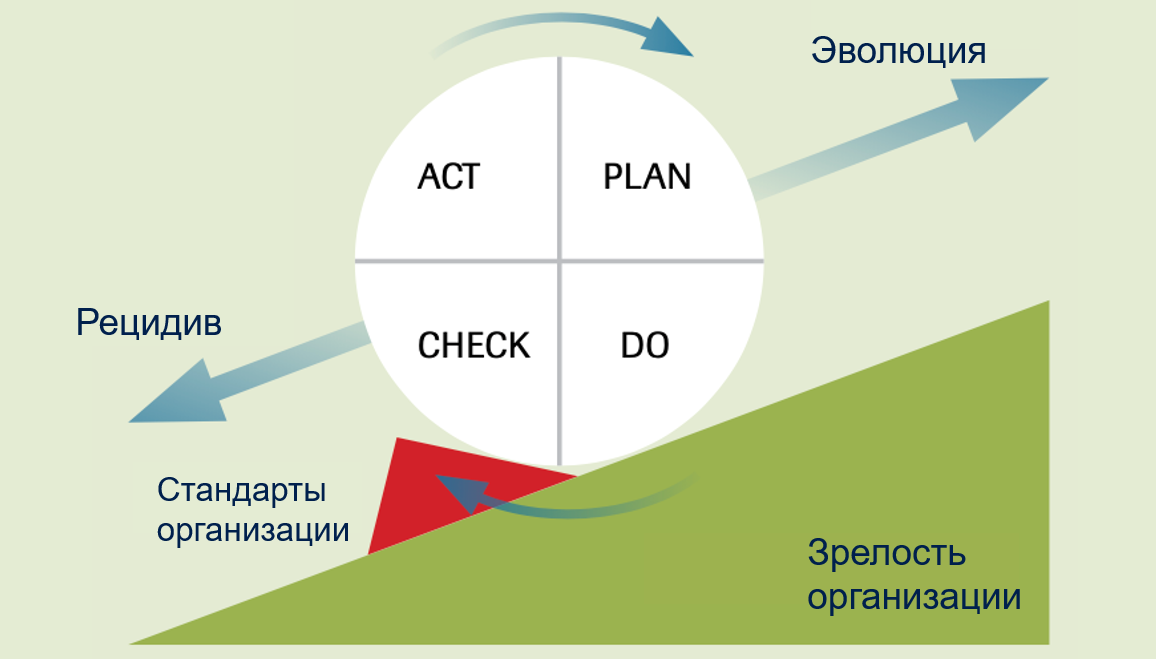Change Management 2: Resistance is useless
In the last post, I already talked about how to control changes, why there is a need to change something, and, most importantly, how people perceive innovations that are impending on them. You can read about it here. Today we will focus on practical approaches to overcoming different reactions to changes from the team.
Last time we talked about the fact that people react differently to changes, and this reaction is not always positive. However, resistance can be overcome by helping employees adopt the new rules.

If you take a closer look at the Kübler-Ross model that we talked about in the last post, you can divide the sequence of human reactions into three large stages:
- Defrosting, or destruction of the old state
- Movement, or the search for new methods of thinking and working
- Freezing, or fixing the formed patterns and principles of work
To move from theory to practice, let’s look at the John Cotter model. For painless implementation of changes, Kotter suggests following 8 steps in teamwork:
- Create a sense of need
- Form a team of like-minded people
- Formulate a new vision
- Spread a new vision
- Eliminate obstacles
- Quickly achieve the first results
- Securing Success
- Securing changes in corporate culture
The first four points of this scheme of actions fall into the “Unfreeze” space and help to give a positive impetus to human reactions, to create a feeling that the changes are really useful.
Steps 5 to 7 help to direct the “Movement” in the direction we need, creating a feeling of positive change in the team and each employee individually, and the last, step 8, just refers to the “Freeze” and implies the adoption by the company and its team of a new states.
Stages of implementing changes

1. Feeling of need
The first step is very important, and it involves active communication within the company. To soften the emotional blow from the upcoming changes, you need to inform the team, talk about the advantages of the upcoming changes.
For example, when a company changes ownership or management leaves, people start to worry. If no explanations and clarifications follow from the leadership, they themselves will fill the unknown with negative emotions. This is how rumors and speculations appear. It is necessary that everyone understands that without the upcoming changes it would be worse.
At the same time, communication does not have to be verbal, the main thing is to create a bright message for the team. For example, when Alexander the Great landed on the coast of Phenicia, he ordered all ships to be burned. The warriors, frightened by the numerical superiority of the enemy, still kept in mind the plan of retreat. Burning the ships is a signal to the army that there is no more escape route, so there is only victory or death to choose from.
2. A team of like-minded people
Managers lead change, but without a team of like-minded people, it will be very difficult to cope with their implementation. You need to find a group of people who support the change and work with them. It’s not just about leaders – you need to look for like-minded people at various levels so that later they can support changes and become an example for others.
3-4. Shaping and spreading a shared vision
Very often people look at the same thing, say the same words, but mean different things. Each employee can also perceive the future after changes from his own point of view. To succeed, you need to form a single vision and convey it to everyone. And here a team of people who share a positive outlook on the coming transformation helps very well. After all, you are unlikely to be able to talk to every employee of a large organization personally. In practice, large companies often even allocate the position of IT Evangelist, but in our case he will work for an internal, not an external audience.

5. Removing obstacles
After abandoning the existing status Quo, the introduction of new ideas will inevitably await obstacles. The task of the head / manager is to eliminate these obstacles as quickly as possible. To do this, you need to carefully monitor the changing processes and track their effectiveness.
And even if things are going smoothly (which they usually don’t), there are still people in every company who resist change. Below we’ll talk about motivating these people and working with them.
6. First results
This is a very important point on which the success of the changes largely depends. The fact is that a person cannot hold his attention for a long time. And if we have conceived a large project with changes lasting a year, within a month the enthusiasm of like-minded people will subside if it is not actively supported. And for this change must be supported by intermediate victories and achievements.
Therefore, a wise leader sets the stage for quick first successes even before the change begins, because quick success inspires the team and motivates it to move forward more actively. It is no coincidence that in computer games it is not difficult to get achievement at the first levels. Otherwise, games would have attracted us no more than prolonged and incomprehensible changes at work.
7. Securing Success
It must be remembered that any change is a way out of your comfort zone. If a person successfully goes through the training cycle, begins to think and act in a new way, and achieves his goals (they may be different for each employee), then the changes are positively evaluated and become part of a new reality. But if you let the person go into the “Panic Zone”, the increasing discomfort can lead to a rollback and refusal to change.
To consolidate the success of change, each person must be in the corridor between easy and difficult tasks, so that innovation leads to an expansion of the comfort zone and personal growth of the employee.

The book “The Thousand Faced Hero” examines the scheme of the development of the hero in various literary works. So, all fairy tales develop according to the same template. The hero receives a challenge, and either refuses it and stays with his own, or accepts it and, overcoming obstacles, gains new knowledge, returning home with new experience.
This pattern can be followed when implementing changes. By offering to choose the path of change, we help a person grow and reach a new level of self-awareness. In this case, he will be happy in the new reality. For this to happen, it is necessary to create an attractive goal, help him decide on this path and not make changes too strong and difficult for each of the participants in the process.
8. Consolidation of changes in corporate culture

Once the changes have been made, our goal is to reinforce them in the corporate culture. This can be done through new corporate standards and processes, as well as a modified system of rewards and motivation. Having clearly defined rules of work helps the company to reach a new level of maturity and will not allow a rollback to the old way of working.

The main thing is to find the best way
With the right approach, employees in a company inevitably embrace a new reality and a new model, and change becomes part of the new path. However, it is not so easy to implement this in practice. In the next post, I’ll share some proven change management models that can be applied to succeed even when people show significant resistance. In particular, we will analyze the “wheel of change”, balancing different processes on the way of transformation of the company, as well as the principles of working with motivations and an insular approach to the implementation of changes.





